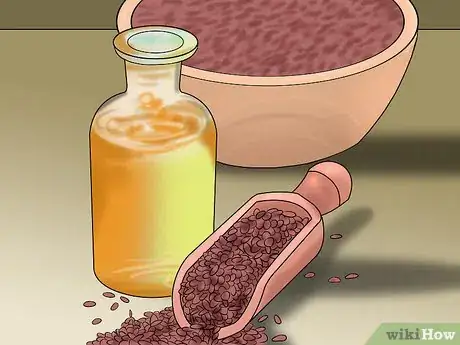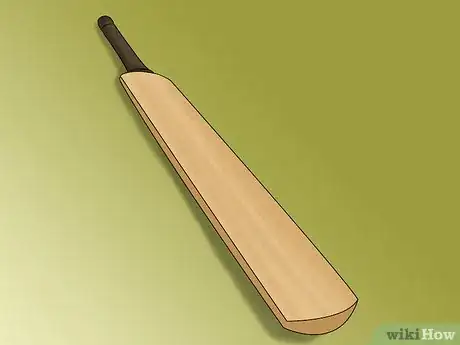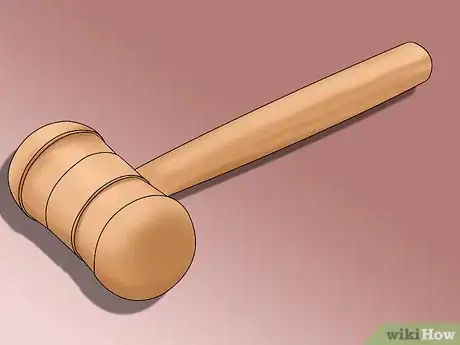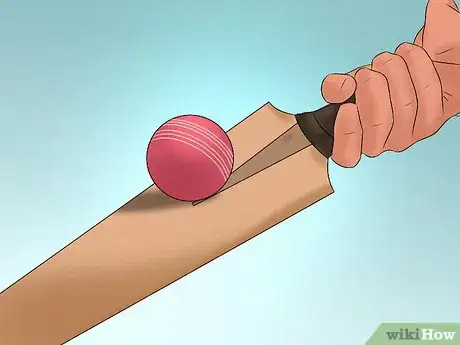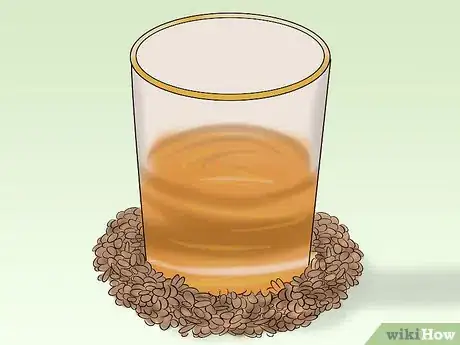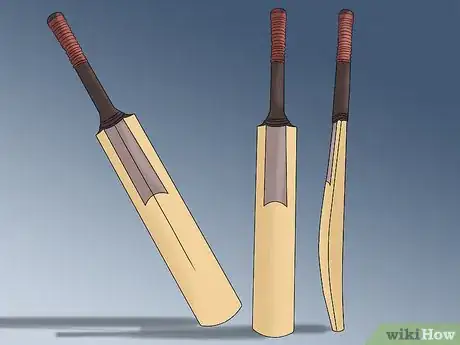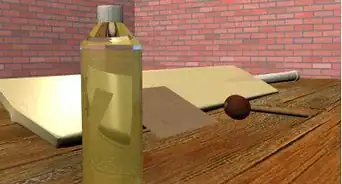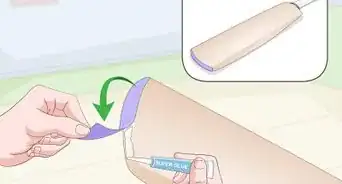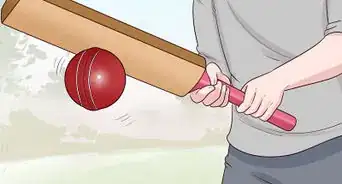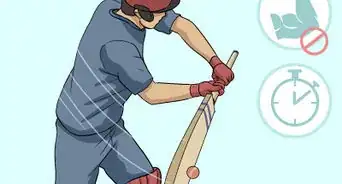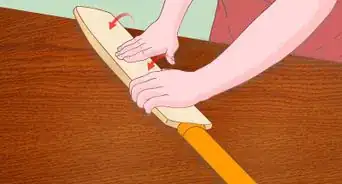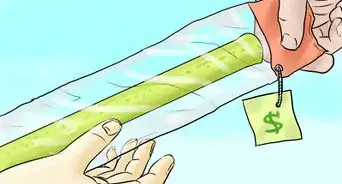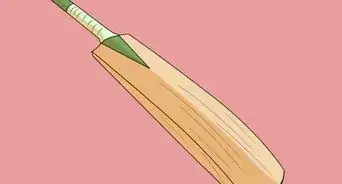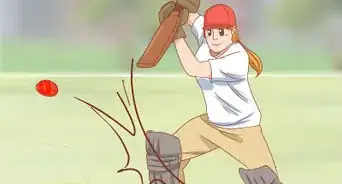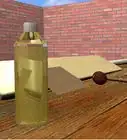wikiHow is a “wiki,” similar to Wikipedia, which means that many of our articles are co-written by multiple authors. To create this article, 15 people, some anonymous, worked to edit and improve it over time.
This article has been viewed 64,436 times.
Learn more...
Once you have purchased your new cricket bat, you will probably want to begin to start using it immediately. However, before you go out and start hitting those sixes and fours there are a few steps you need to take in order to improve the performance of your bat and increase its lifespan.
Steps
Applying Linseed Oil
Linseed oil softens the bat fibres and then knits them together. This makes them supple and able to withstand being hit by the force of the cricket ball at high speed.
-
1Use raw linseed oil or specialized cricket bat oil to treat your bat prior to use is recommended. This will help maintain moisture levels within the bat and reduce the chance of cracking or splitting while playing.[1]
- Raw linseed oil tends to penetrate better than boiled linseed oil.
-
2Using either a soft cloth or paintbrush, lightly apply 5-6 coats (each coat is one teaspoon) of oil to the face, toe an edges. Do not oil the whole bat, just oil the face, toe and edges.[2]Advertisement
-
3Allow each coat to dry whilst the bat in a horizontal position. The bat should be dry before proceeding to the knocking in.
Using the Mallet
This method is known as "knocking in". It's a process designed to harden the bat thoroughly before use.
-
1Beat the new cricket bat with a hardwood bat mallet. This will harden your bat.[3]
- Hit hard enough to create a dent in the middle of the bat.
- Check to see if you did make a dent. Then gently knock the face of the bat around this dent to make it level. When done, you should no longer see the dent.
- Round off the edges. Hit with a 45 degree angle to the face. This allows the mallet to compress the willow. Start with one dent on the edge, then gently knock around it to remove it and smooth the edge out.
- In each case, repeatedly strike the face and edges of the bat whilst gradually increasing the force of the strike over time.
- Do not use the mallet on either the face or the bottom of the bat toe with the mallet.
-
2Hit the ball with the bat as much as you can. This will continue to harden it.[4]
Maintaining the Cricket Bat Over Time
Community Q&A
-
QuestionCan I use the mallet before oiling?
 Community AnswerNo. It's better to oil it first and let it dry overnight.
Community AnswerNo. It's better to oil it first and let it dry overnight. -
QuestionWhich other oil is best to use before seizing it?
 Community AnswerLinseed oil is a good option.
Community AnswerLinseed oil is a good option. -
QuestionHow do I oil a bat that has a toe guard?
 Community AnswerDon’t oil the toe guard. Oiling on only the face of the bat is recommended. The toe guard will be spoiled if it is oiled.
Community AnswerDon’t oil the toe guard. Oiling on only the face of the bat is recommended. The toe guard will be spoiled if it is oiled.
Warnings
- Do not allow the bat to become wet either during use or storage (this will cause the toe to swell).⧼thumbs_response⧽
- Do not over oil your bat––more bats are ruined by over oiling than under oiling.⧼thumbs_response⧽
- Do not store your bat in any source of heat such as central heating or moisture such as seepage to avoid the bat becoming brittle and possibly snapping.⧼thumbs_response⧽
- Do not play with the bat with any inappropriate objects, i.e, rubber balls, metal balls, etc.⧼thumbs_response⧽
- Do not stand your bat in oil of any kind.⧼thumbs_response⧽
- Do not overuse your bowling machine.⧼thumbs_response⧽
- Do not use excessively hard cricket balls to knock in the bat, as this could cause damage to the bat.⧼thumbs_response⧽
Things You'll Need
- Linseed oil
- Paint brush/cloth
- Mallet/cricket ball
